The 10 Best Things to Do in Siem Reap (Other Than Angkor Wat!)
This article may contain affiliate links, meaning I may earn a small commission if you purchase through these links at no extra cost to you. Please refer to my Disclosure Policy for more information.
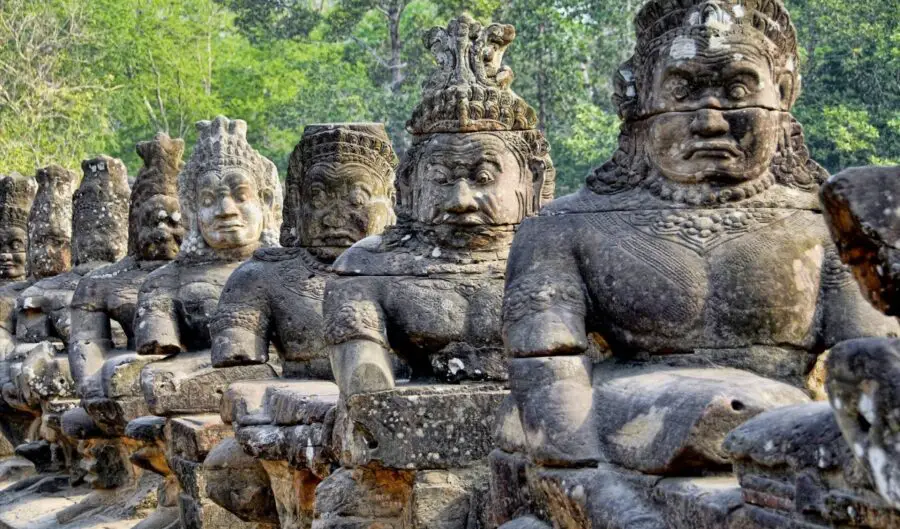
Siem Reap. The second largest city in Cambodia (next to the capital city of Phnom Penh), Siem Reap is an amazing city for backpackers and luxury travelers alike, with lively markets, cultural shows, breathtaking natural sights, and ancient temples. Needless to say, there are many incredible things to do in Siem Reap.
But when deciding what to do in Siem Reap, many people immediately think of Angkor Wat. And obviously I 100% recommend a trip to this archeological wonder. But don’t forget, there are countless Siem Reap attractions beyond Angkor Wat!
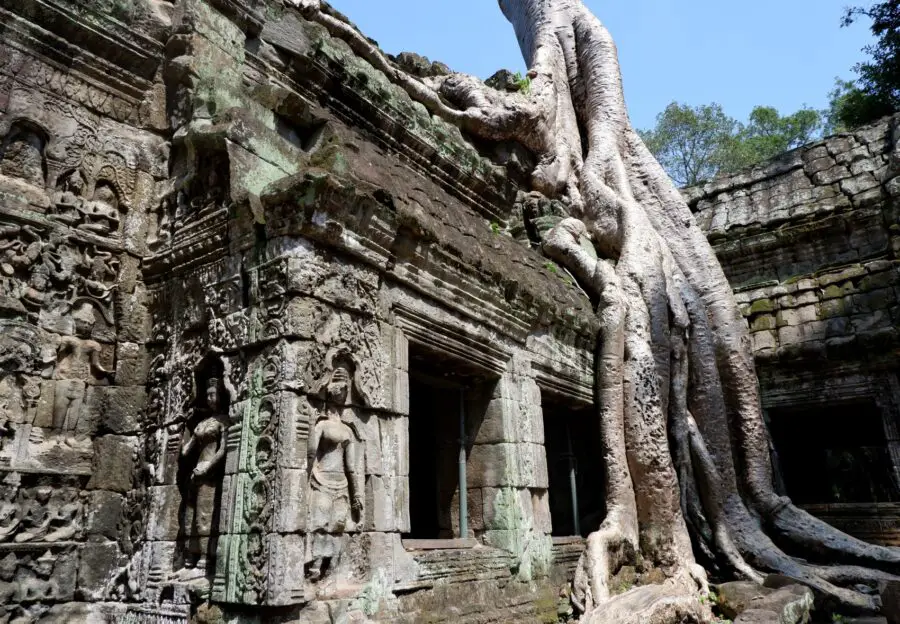
I recommend planning your Siem Reap itinerary with a mix of different activities. A bit of nature, some history, a shopping spree, a night of partying… and surely, a whole bucket-load of fun!
As you’ll soon discover, many of the most interesting places to visit in Siem Reap are closely tied to its tumultuous history and difficult past. By visiting the Siem Reap attractions listed below, you can contribute to some amazing causes. These visits and donations can help the local communities, the environment they depend on, and various humanitarian efforts.
A Quick Summary of the Best Things to Do in Siem Reap
- Angkor Wat
- Angkor National Museum
- Cambodia Landmine Museum
- The Old Market
- The Angkor Night Market
- Pub Street
- Apsara Dance Performance
- Phare, the Cambodian Circus
- The Tonle Sap Lake Floating Villages
- Angkor Center for Conservation of Biodiversity
- Angkor Pottery Center
These are all great places to visit in Siem Reap and will surely make your trip a memorable one. And remember, this Siem Reap itinerary is made in no particular order, so plan what to do based on your preferences and travel style!
Getting Around Siem Reap
Before I get into all the amazing things to do in Siem Reap, I first want to share my tips on how to get around.
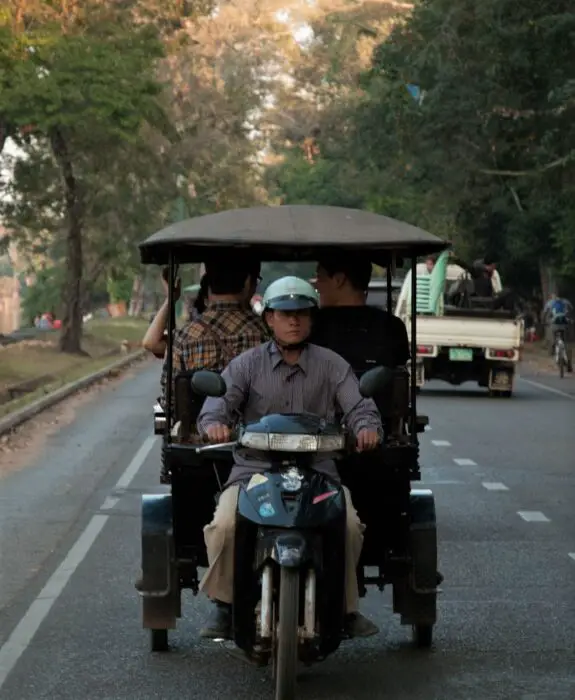
One of the easiest ways of getting around Siem Reap is by tuk tuk, an open carriage attached to a driver’s motorbike. It’s the main form of transportation in Siem Reap; you can even use it for far away destinations, like the Tonle Sap villages and Angkor Archeological Park! Renting a tuk tuk for the day will usually cost $15-25 USD.
Most hotels and hostels can arrange a tuk tuk service, but you can also easily find one yourself, as there are thousands of drivers in Siem Reap. Don’t forget to ask about the price and haggle a bit. And, an advantage to using the tuk tuks is the drivers are often also able to give you guided tours and recommend the best restaurants in Siem Reap.
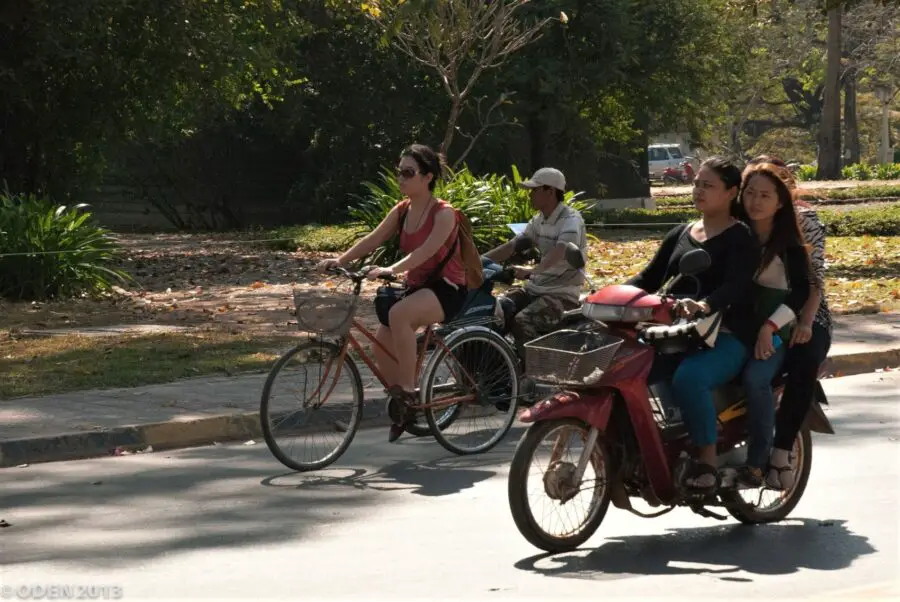
If you prefer to be more self-sufficient, there is also the option of bike rental in Siem Reap. But be prepared to pedal (and sweat) a lot, as some attractions cover quite a long distance!
And, of course, you can always use a taxi, rent a scooter, or simply get there by foot.
The 11 Best Things to Do in Siem Reap
1) Angkor Wat and Angkor Archeological Park
- Opening Hours: Varies by temple, but usually 5:00 am/7:30 am to 5:30 pm/7:00 pm.
- Angkor Wat Entrance Fee: $37 USD for 1 day, $62 USD for 3 days, or $73 USD for 7 days.
- Website: https://www.angkorenterprise.gov.kh/temple
While Angkor isn’t the only attraction in Siem Reap, you would be completely nuts to skip it. A visit to these awe-striking remains is an absolute must on your Siem Reap itinerary!
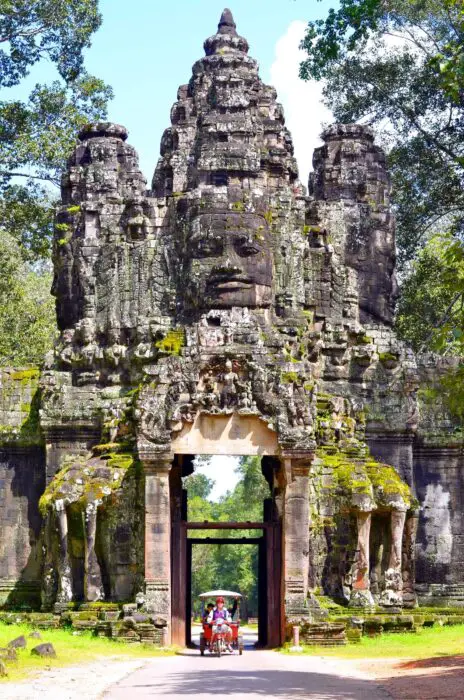
For a bit of background, Angkor was an ancient city and the capital of the Khmer Empire, which ruled over most of Southeast Asia from the 9th to 15th centuries.
The area spans 400 square kilometers, and it is thought to have supported up to 1 million inhabitants. At its peak, it not only boasted magnificent temples, but also a complex irrigation system and communication routes.
By the 16th century, the city was completely abandoned. Since then, it has fallen into nature’s leafy hands and has become overgrown with lush jungle. Some of the most obstinate plants have pushed into — or even through — the temples themselves!
The Temple of Angkor Wat
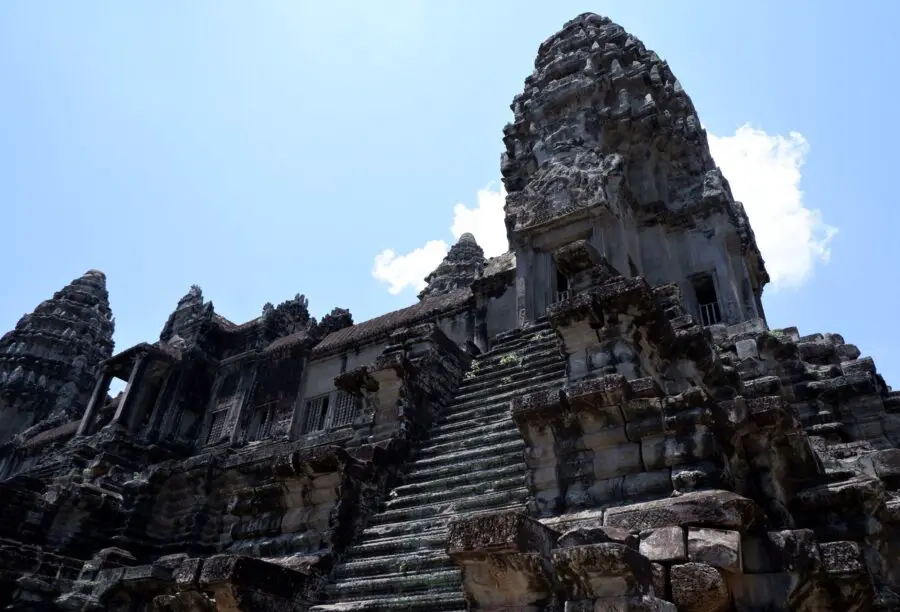
The most famous of the Angkor temples — and perhaps the most famous of all Siem Reap tourist attractions — is Angkor Wat.
Built by the Khmer King Suryavarman II in the first half of the 12th century, Angkor Wat was originally dedicated to the Hindu god Vishnu, but it became a Buddhist temple by the end of the same century. It is notably the largest religious monument in the world — no wonder it took 30 years to build!
The Temples of Angkor Archeological Park
Let’s not forget there are many other temples in Angkor — over a thousand in fact! And your temple pass will give you access to all of them, so it would be a shame to come all the way out to Angkor and only check out Angkor Wat.
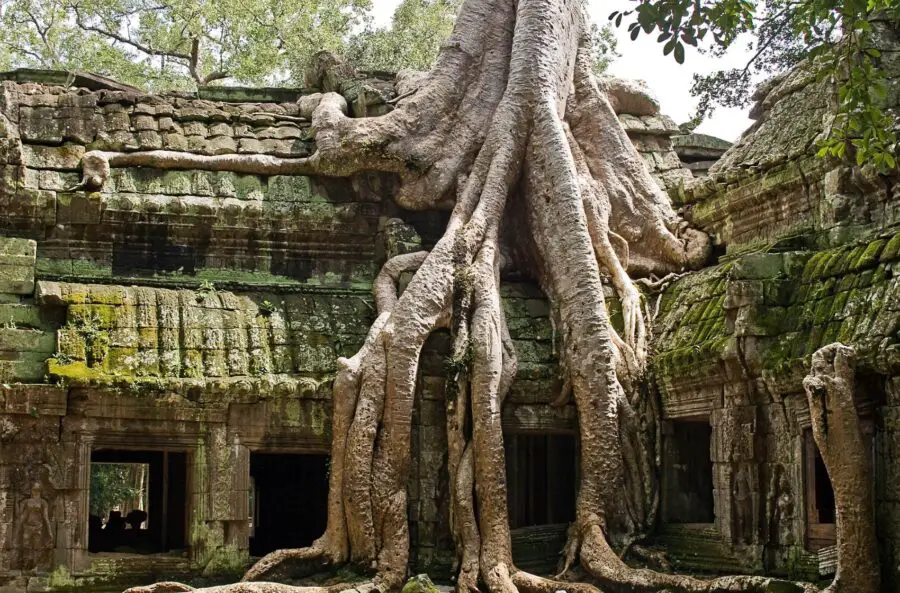
But even with the 7-day pass, you won’t be able to explore the entire area. I recommend doing some research and planning ahead for your Angkor Wat itinerary. Or, you can leave it up to your driver’s expertise and let them lead the way.
As a summary, here are the top temples in Angkor Archeological Park (other than Angkor Wat):
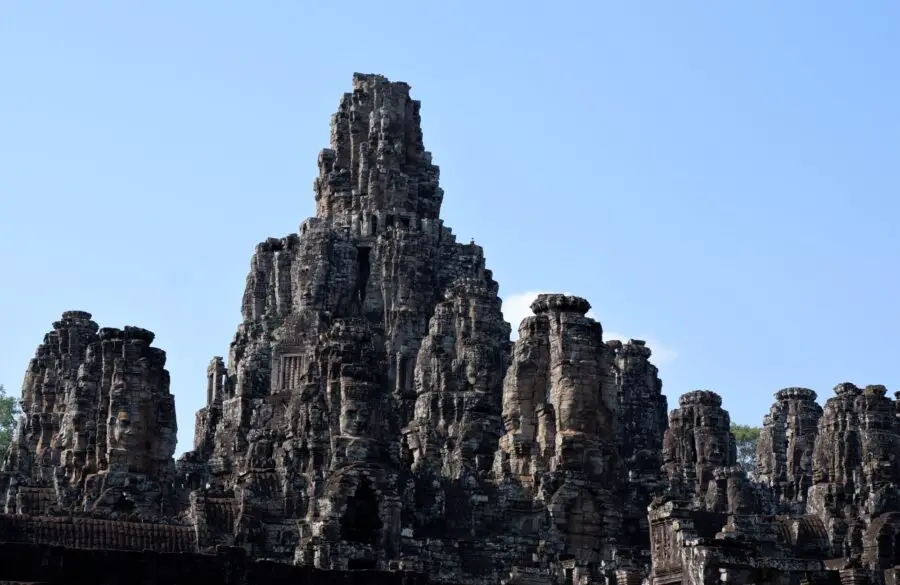
- Bayon Temple: Famous for the carvings of 216 smiling faces, I definitely recommend visiting (and trying to spot as many faces as you can!).
- Ta Prohm Temple: A filming location for Lara Croft Tomb Raider, Ta Prohm Temple is literally being consumed by nature; visit to gape at the powerful trees taking over the ancient temple!
- Ta Som: A smaller temple, I recommend visiting the eastern gate of Ta Som, where you can find another smiling face carved into the temple walls, as well as another tree consuming the temple gate!
How to Get to Angkor Wat
As with most places in Siem Reap, the easiest way to get to Angkor Wat is by tuk tuk. It’s best to set out early in the morning (the Angkor Wat temple opens at 5:00 am); you should be at the gate before opening time if you want to beat the biggest crowds! This will also allow you to experience sunrise at Angkor Wat.
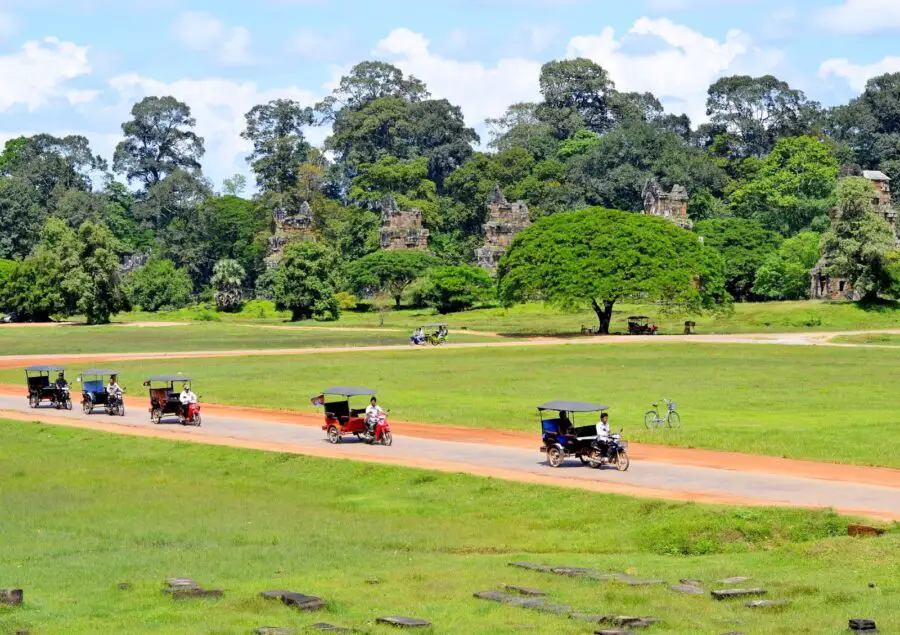
If you visit by tuk tuk, your driver will take you from temple to temple and wait for you at each one. But make sure you take a photo of your driver and tuk tuk, because the place will be filled with them and it’s easy to lose track! (Trust me, I learned this from experience).
Other ways to get to Angkor Wat include taxi, renting a bike, renting a scooter, or by guided tour. I personally spent 3 days in Angkor Wat, and decided to get there differently each time: once by bike, once by guided tour, and once by tuk tuk!
The Best Time to Visit Angkor Wat
For an extra special experience, come for the Angkor Wat sunrise and then stay for the Angkor Wat sunset — not necessarily on the same day, but they are both downright magical things to do in Siem Reap!
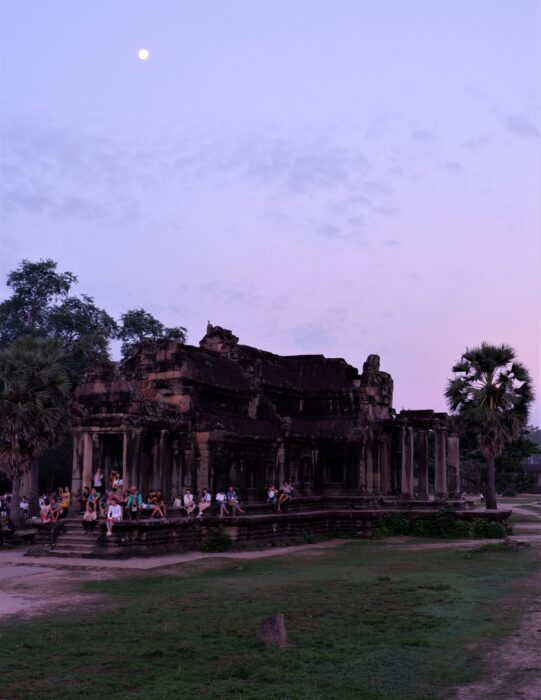
How to Buy Angkor Wat Tickets
On your way to Angkor Wat, your tuk tuk driver or tour guide will stop at the Angkor Ticket Office off Apsara road. Here, you’ll be able to buy your Angkor Wat ticket — this is the only place you can buy valid tickets, so don’t waste time looking online. And make sure to bring your passport or country ID!
The passes will allow you to visit Angkor Wat, as well as all the other temples of Angkor Archeological Park. There are three possible passes you can buy:
- 1-day pass for $37 USD
- 3-day pass for $62 USD
- 7-day pass for $72 USD
One thing to note is that the 3-day and 7-day passes don’t need to be used consecutively; the 3-day pass is valid for 10 days from the date of purchase, and the 7-day pass is valid for seven different days within a month of purchase!
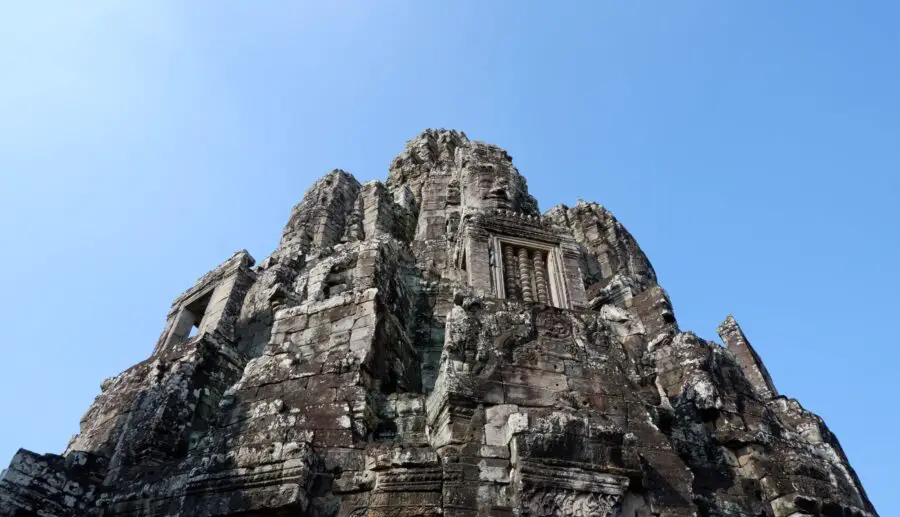
I recommend buying the 3-day pass, as you surely won’t have enough after just one day. Even if you only go for two out of the three days, it’s still cheaper than buying two 1-day passes.
What to Wear to Angkor Wat
One last thing to note is that, as Angkor is a sacred site, there is an Angkor Wat dress code, so make sure to wear appropriate clothing when you visit!
Pants or skirts should be long enough to cover your knees, and shirts must cover your entire shoulder. You will not be allowed in if you wear revealing clothing, even if you cover up with a scarf! For shoes, flip flops or sandals are allowed, but I recommend sneakers for your Angkor Wat visit as the ground is uneven.
2) Angkor National Museum
- Opening Hours: 8:30 am-6:00 pm from April to September, 8:30 am-6:30 pm from October to March.
- Cost: $12 USD for adults, an extra $3 USD to use your camera, and an extra $3 USD for an audio headset.
- Website: http://www.angkornationalmuseum.com/
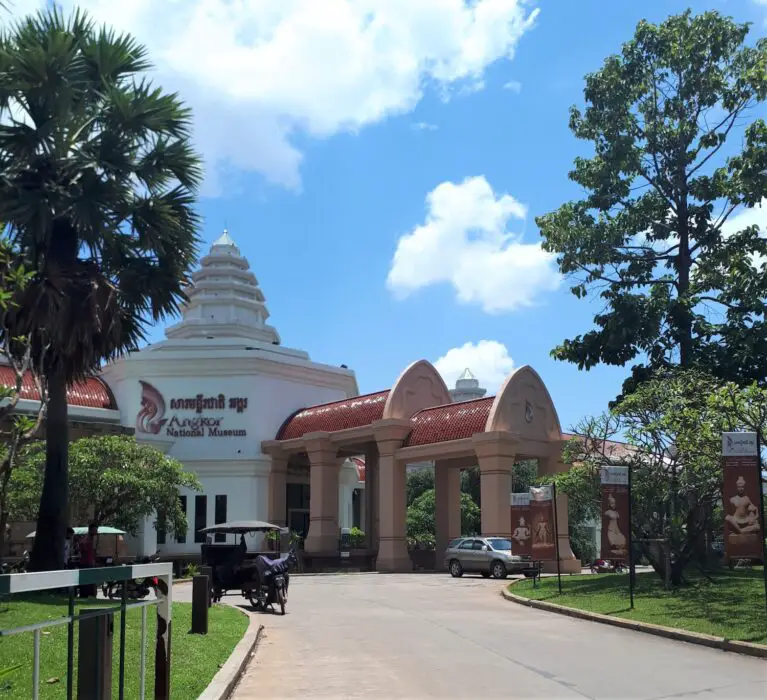
Angkor Wat is an absolute must on your Siem Reap itinerary, but don’t zoom off to this wild and wondrous land on your very first day. First, make a visit to Angkor National Museum.
One of the best museums in Siem Reap, this iconic Siem Reap attraction holds 1,000 artifacts from the Khmer empire, and 8 galleries themed by era, religion, and royalty, including:
- Relics of the Khmer kings
- Stone pallets with ancient Khmer and Sanscrit inscriptions
- Traditional costumes of former royalty and Apsara dancers
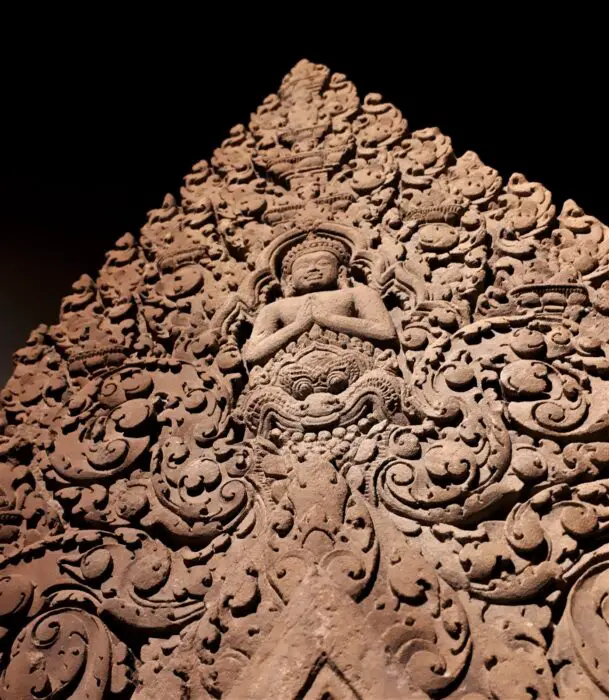
Starting your Siem Reap itinerary by visiting this museum will give you a greater understanding of the Khmer civilization that created the temples of Angkor and other popular landmarks. You should also pay the extra fee for the audio headset, as it’s incredibly informative!
3) Cambodia Landmine Museum
- Opening Hours: 8:00 am-5:30 pm, every day of the year.
- Cost: $5 USD
- Website: https://www.cambodialandminemuseum.org/
The Cambodia Landmine Museum is one of those Siem Reap attractions that will leave a deep mark on you.
Cambodia has a difficult past, ravaged by the Khmer Rouge Army for nearly 35 years. During this time, over 6 million landmines were planted by child soldiers forced to work for the Khmer Rouge.
One of these soldiers was Aki Ra. After the Khmer Rouge were brought down, he came back to the villages where he had planted thousands of landmines and started removing them by hand, one by one.
In the villages, he also found many orphaned or abandoned children who had been wounded by the landmines. He brought them home where he and his wife cared for them along with their own children.
To provide for all the children, he let tourists view the landmines he had dug up and defused in his home for $1. And so began the Cambodia Landmine Museum in 1997. Today, the museum (now near the Banteay Srey Temple in Angkor National Park) is one of the most visited attractions in Siem Reap.
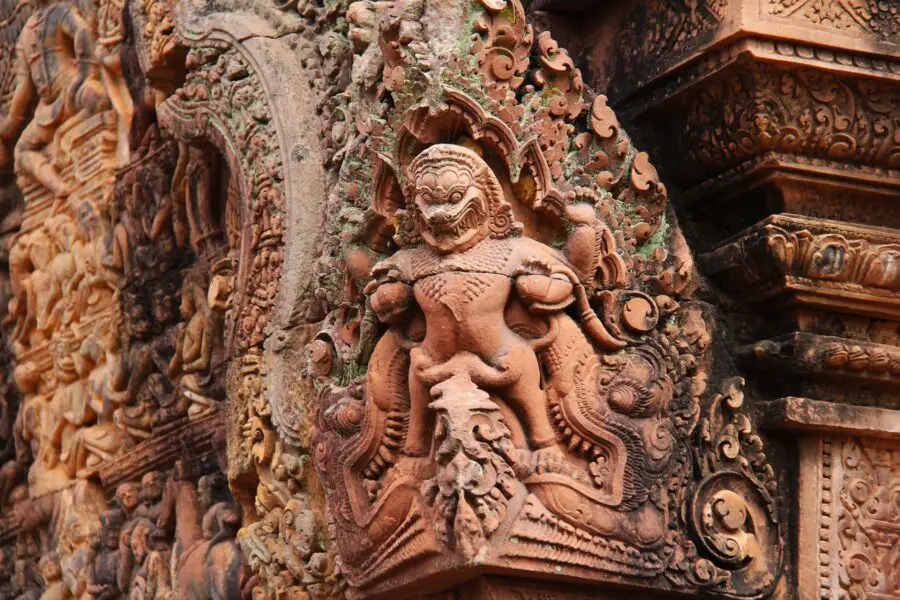
You can get a free guided tour of the museum in Khmer or in English. During your visit, you will:
- See active and detonated landmines up close
- Learn all about the history behind the landmines
- Get an up-to-date briefing on the current landmine situation
The Cambodian Landmine Museum is a great way to discover Siem Reap and, at the same time, support a great cause. You can read more about the museum’s history, mission, and projects on their official website.
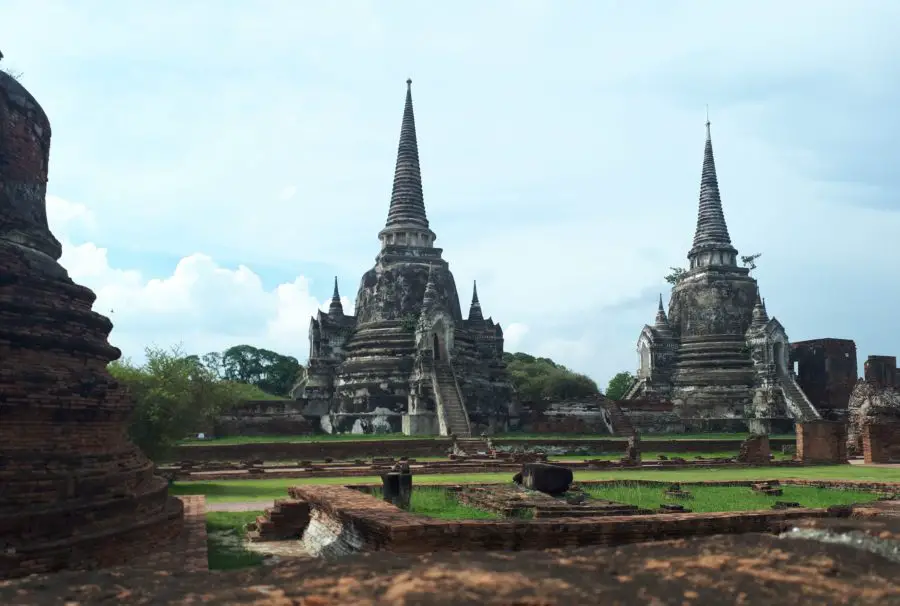
If you’re planning a Southeast Asia itinerary and you’re looking for tips and inspiration, click here to read my 5-week Southeast Asia itinerary!
4) The Old Market
- Opening Hours: From 7 am.
- Cost: Depends on what you buy.
If you’re wondering what to do at Siem Reap, the Old Market is another must-visit! Give your brain a break from the intense history lesson it’s getting and put your haggling skills to the test.
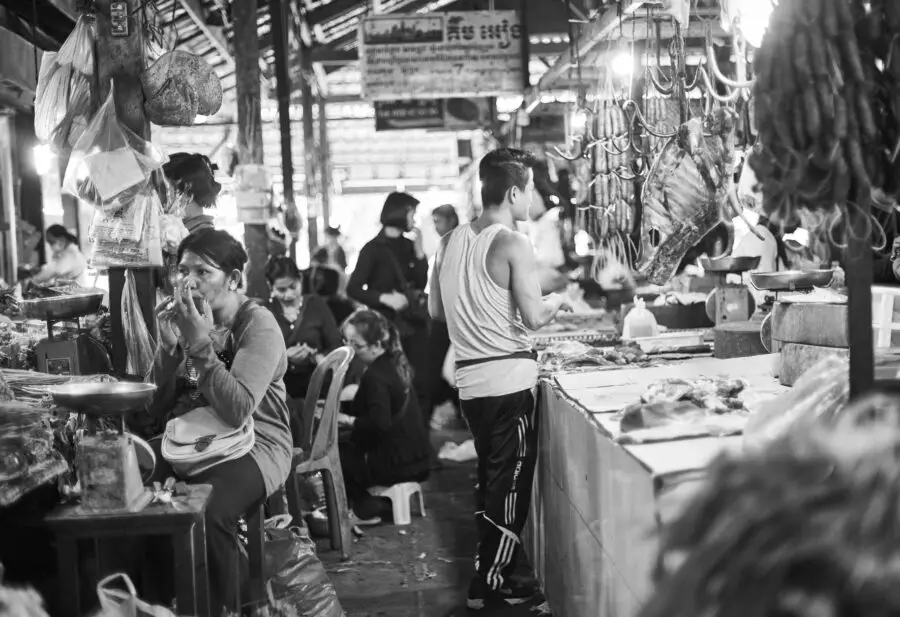
As the name suggests, it’s the oldest market in Siem Reap — in fact, it’s around a century old. It’s also the only daytime market in the city. While it certainly won’t provide the same thrilling experience as the night market, the Old Market definitely feels more authentic, as this is the market locals use to do their shopping.
At the Old Market, you can find a wide variety of items, including fruits and vegetables, meat and seafood, seasonings, clothes, shoes, jewelry, and crafts. Truly, you can find pretty much anything for around $5 USD — it’s a shopaholic’s dream!
5) The Angkor Night Market
- Opening Hours: 5 pm-12 am.
- Cost: Depends on what you buy.
Right around the corner from the Old Market, but with a strikingly different atmosphere, is the Siem Reap Night Market.
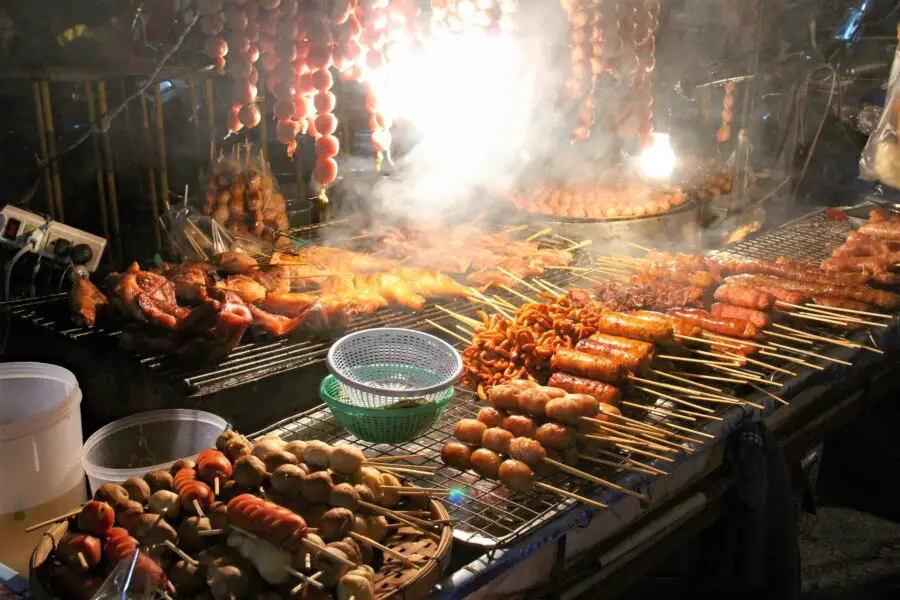
It was founded in 2007 with the aim of preserving Khmer handicrafts and helping the locals. Now, it holds over 200 shops offering local handcraft-goods including bags made from recycled materials and hand-carved jewelry. Beer and snacks are also offered here — but save your appetite for the next stop on your Siem Reap itinerary!
6) Pub Street
- Opening Hours: 5 pm-4 am.
- Cost: Depends on what you buy.
Pub Street is the perfect antidote to tourism fatigue; after a day bursting with culture, history, and ancient architecture, it’s time to enjoy Siem Reap’s nightlife!
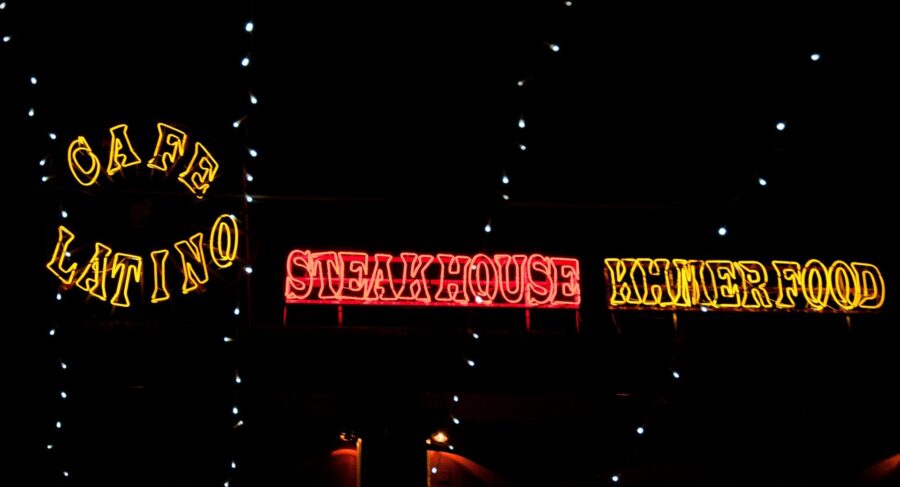
Pub Street is bursting with color, filled with neon signs and countless clubs and bars, so let your hair down and get ready to party! Most bars offer draught beers for $0.50 USD and cocktails for $1.50 USD.
You’ll also find cafés, souvenir shops, art galleries, and restaurants, so it’s a great spot during the day as well! But note that Pub Street only becomes a pedestrian zone after 5 pm.
7) Apsara Dance Performance
Apsara is the traditional dance of Cambodia, dating back to the 12th century when Suryavarman II (the king who had Angkor Wat built) was in power. In fact, there are carvings of the Apsara dance at Angkor Wat itself!
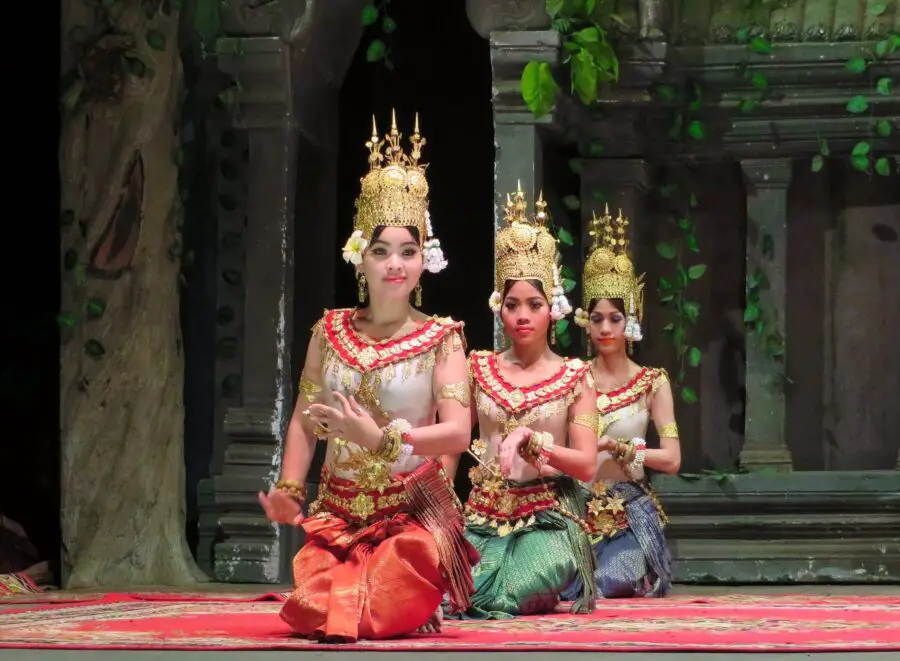
The dance used to only be performed for the royal family by beautiful women who were thought to have supernatural powers. Today, you can be royalty for a day and catch an Apsara performance at many hotels and restaurants.
The show is complete with professional lighting, backdrops, and intricate costumes. The duration varies, but usually lasts 2 hours. Most of the performances also include other genres of traditional Khmer dance and martial arts, including:
- Masked Dance
- Shadow Theater
- Folk Dance
- Bokator fight demonstration
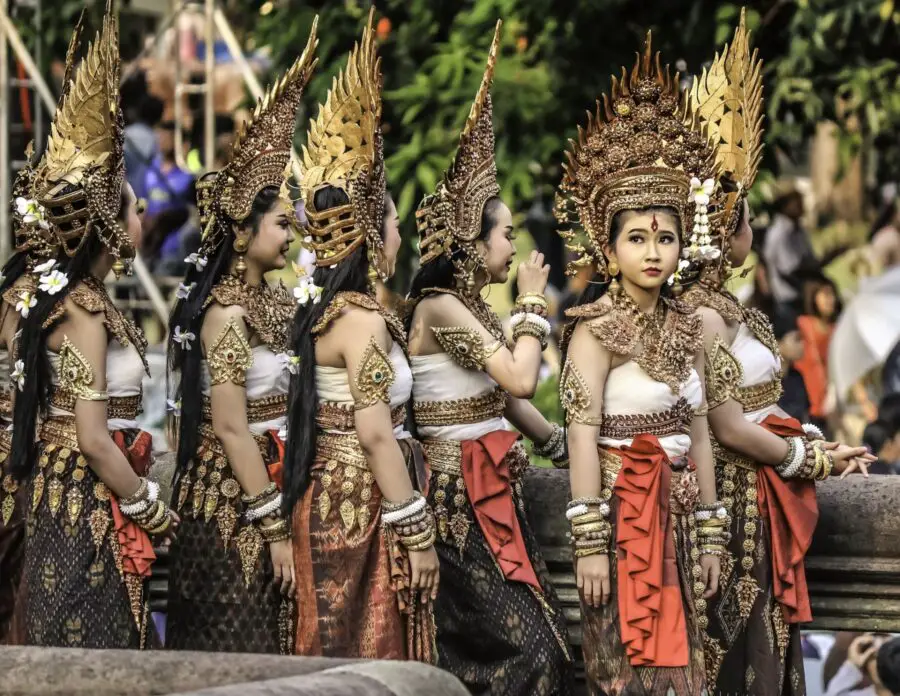
The Apsara dance is undoubtedly one of the most popular things to see in Siem Reap, mixing culture, history, art, and entertainment into one incredible package!
8) Phare, the Cambodian Circus
- Performance Times: Fridays and Saturdays from 7:30 pm (& pre-show entertainment from 5 pm).
- Cost: $18-38 USD for adults, depending on seat location.
- Website: https://pharecircus.org/
You’ll find plenty of things to do in Siem Reap that contribute to great causes, and Phare, the Cambodian Circus is one of them (rest assured, no animals are used!).
This social enterprise model took root back in the 1980s. On the Thai border, a refugee camp gave a home to children who escaped the violent aftermath of the Khmer Rouge regime. Here, a French art teacher taught the children drawing and painting as a form of art therapy.

By 1994, the center had closed, but nine of the children, who had by then grown into young men, weren’t ready to give up the concept. They wanted to share the therapeutic effects of art with the poor, socially deprived, and troubled youth in the city.
And so they started the non-profit organization Phare Ponleu Selpak, which translates to Brightness of the Arts. It first began as a continuation of the art classes, taught by the same art teacher. 27 years later, it has grown into a network of multifaceted schools and educational initiatives, including:
- A music school
- A theater school
- A community library
- A kindergarten
- A public primary school
- A public high school
- A children’s house/support program
- An animation studio
- A graphic design and illustration studio
- A visual and applied arts school
Over 1,000 students attend the schools every year, and four of the original founding members are still actively committed to the organization today.
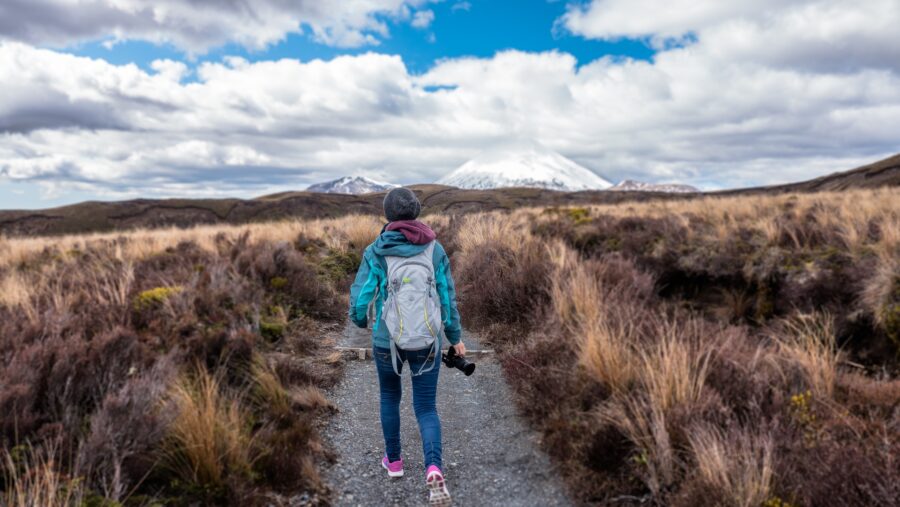
If you want to travel the world but you’re still in school, click here to read my article on how to travel as a student!
Phare, the Cambodian Circus Today
In 1999, students and graduates of the Phare Ponleu Selpak schools started performing in circus shows. In doing so, Phare gives them a place to hone their skills and earn a decent wage. The circus also supports the non-profit schools through royalties, fees, donations, and a portion of the profits.
Needless to say, you should definitely catch a show!
If you’re hungry, you can grab drinks, snacks, or a full meal at the Phare Café — it’s considered the best restaurant in Siem Reap by some. The show is suitable for all ages, so if you’re looking for things to do in Siem Reap with kids, this should be the top of your list! There is also a gift shop, which is an excellent place to buy souvenirs in Siem Reap.
9) The Tonle Sap Lake Floating Villages
- Cost: Varies by village.
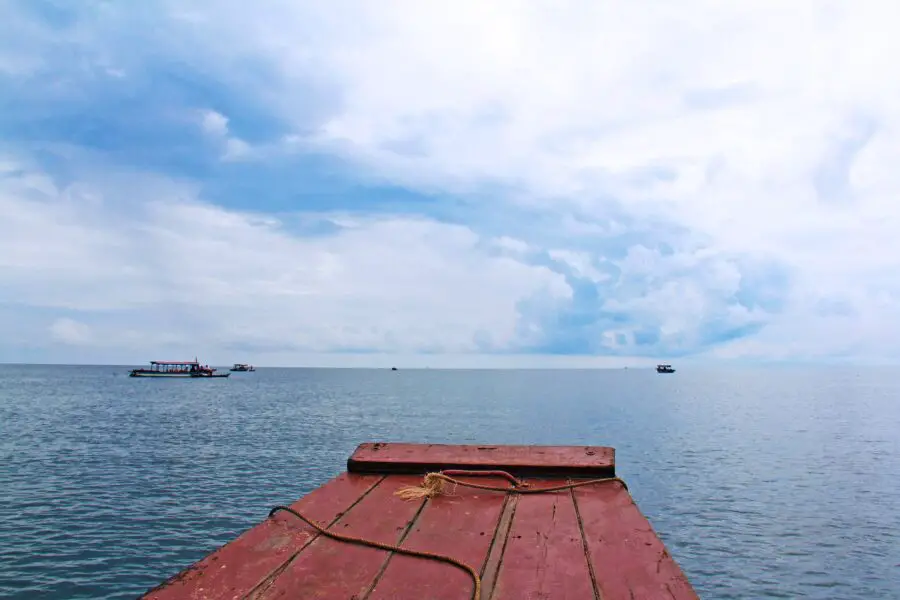
Around 15 kilometers south of Siem Reap is Tonlé Sap, the largest freshwater lake in Southeast Asia. It is home to a huge number of scaly, furry, and two-legged inhabitants, including:
- Over 300 species of fish, snakes, crocodiles, tortoises, and otters
- Over 100 species of water birds such as storks and pelicans
- Over 3 million people living in the floating villages scattered around the lake
Tonlé Sap is an excellent place to see both local wildlife and a very unique lifestyle. The houses of the floating villages either float on rafts anchored in the lake or rest on stilts up to a dozen meters tall. Even the schools, churches, and markets are built this way!
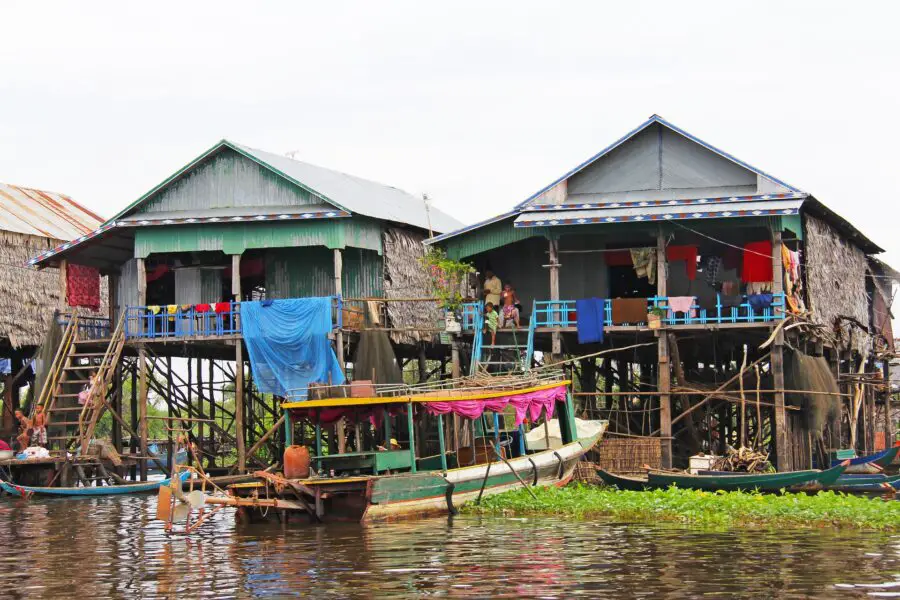
Depending on the season you visit (wet or dry), you may be able to walk on dry land in some villages. However, other times of the year, it can be filled with 10 meters of water.
The History Behind the Tonle Sap Floating Villages
There is a great deal of political history behind this unique Siem Reap attraction. During the Khmer Rouge regime, many of the Vietnamese immigrants in Cambodia were forced to leave. After the regime fell in 1979, these refugees returned to Cambodia where they had grown up and felt most at home.
But with no documents proving that they were born in Cambodia, the Cambodian law doesn’t allow them to own land. The water, however, isn’t mentioned in the law — and that’s exactly where these villagers took to. They make their living by fishing on the lake, giving tours, and selling food and products.
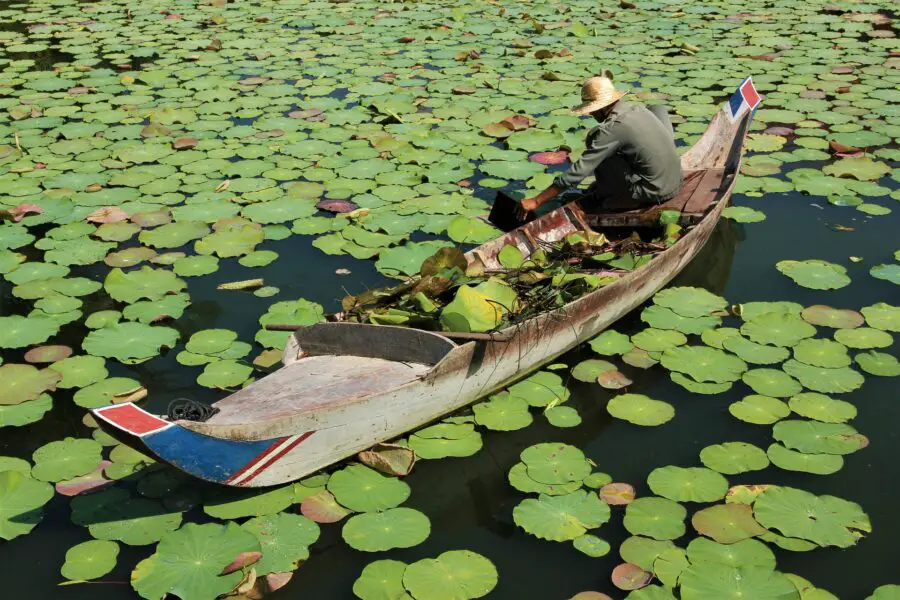
Unfortunately, many of the villagers continue to live in poverty. In some villages, there is a stark contrast between the villagers living on land and those on water. Moreover, the boat trips are organized by external companies and many of them don’t employ or give anything back to the villages they profit from.
If you’d like to contribute to the local community, consider buying food from the locals or eating at a restaurant. You might be surprised to find some of the best restaurants in Siem Reap here!
The Tonle Sap Villages
There are four main Tonle Sap villages open to tourism and accessible from Siem Reap:
- Chong Kneas (15 km away)
- Kampong Phluk (30 km away)
- Mechrey (30 km away)
- Kampong Khleang (50 km away)
Which is the Best Tonle Sap Village to Visit?
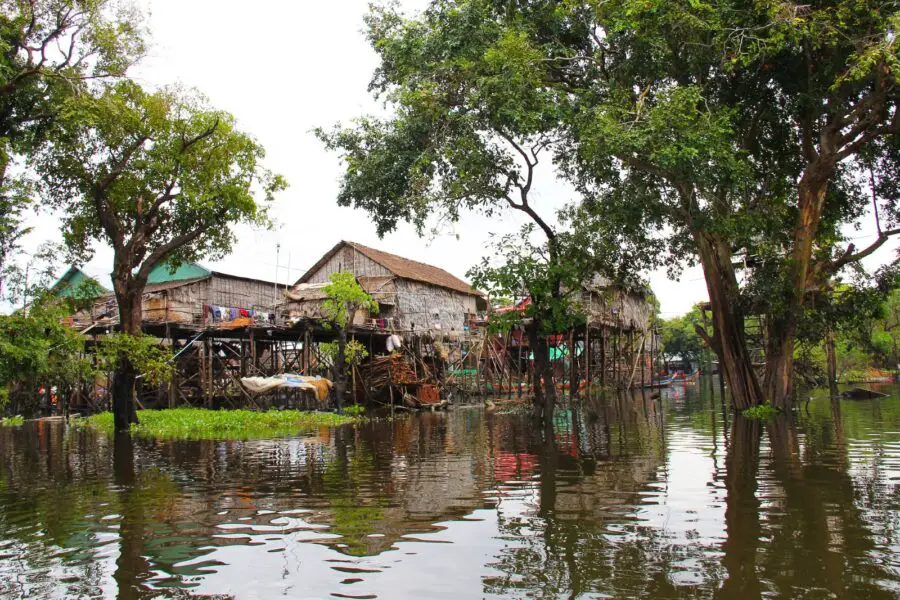
Chong Kneas is unfortunately the most touristy floating village, being the closest to Siem Reap at just 15 km away. Consequently, a lot of tourists fall prey to scams here; for instance, boat guides may ask you for money to “buy rice for the local children” (but they don’t).
For more comfortable, safe, and responsible tourism, consider either Kampong Khleang or Mechrey.
Kampong Khleang is the farthest away from Siem Reap, which means it attracts fewer tourists. You’ll also be able to see both stilted and floating houses here. The best part of Kampong Khleang is that the boat service is owned and run by locals, so visiting this village will actually support the local community! There’s no need to book in advance, just show up and find a boat — tours cost around $20 USD per person.
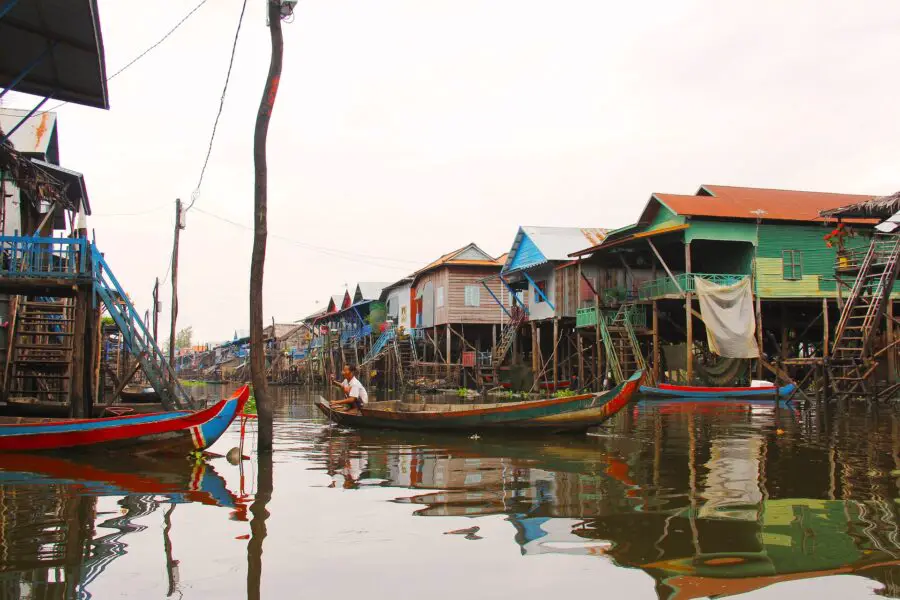
Mechrey is the most recently opened village to tourism. Unfortunately, you will see some of the scams used in Chong Kneas here. However, you can also find a reputable organization: The Lake Clinic. At this organization, you can donate to support medical services in the local communities!
The local boat service, Prek Toal Tours, also supports the community. A full visit to Mechrey will cost $45 USD per person, including transportation to and from the village, a two-hour boat tour, and an English speaking guide.
10) Angkor Center for Conservation of Biodiversity
- Cost: Minimum donation of $3 USD.
- Tours Available: Monday to Saturday at 9:00 am or 1:00 pm sharp.
- Website: http://www.accb-cambodia.org/en/index.php
The Angkor Center for Conservation of Biodiversity (or the ACCB) is another one of the best things to do at Siem Reap (especially for those who like to give back!).

The ACCB is a non-profit organization that uses all revenue to rescue, feed, and rehabilitate the native Cambodian wildlife. The center also aims to increase awareness about conservation and environmental protection.
You can only visit through a guided 1.5-hour tour with an official environmental tour guide. The guide will provide you with up-to-date information about wildlife conservation and show you a variety of animals at the center.
If you have a temple pass, you can also check out the waterfall and riverbed carvings at Kbal Spean temple in Angkor Archeological Park!
11) Angkor Pottery Center
- Opening Hours: 6:00 am-8:00 pm, Monday through Sunday.
- Cost: Classes start at $7 USD.
- Website: http://www.angkorpotterycenter.com/
Last but not least, one of the best things to add to your Siem Reap itinerary is the Angkor Pottery Center.
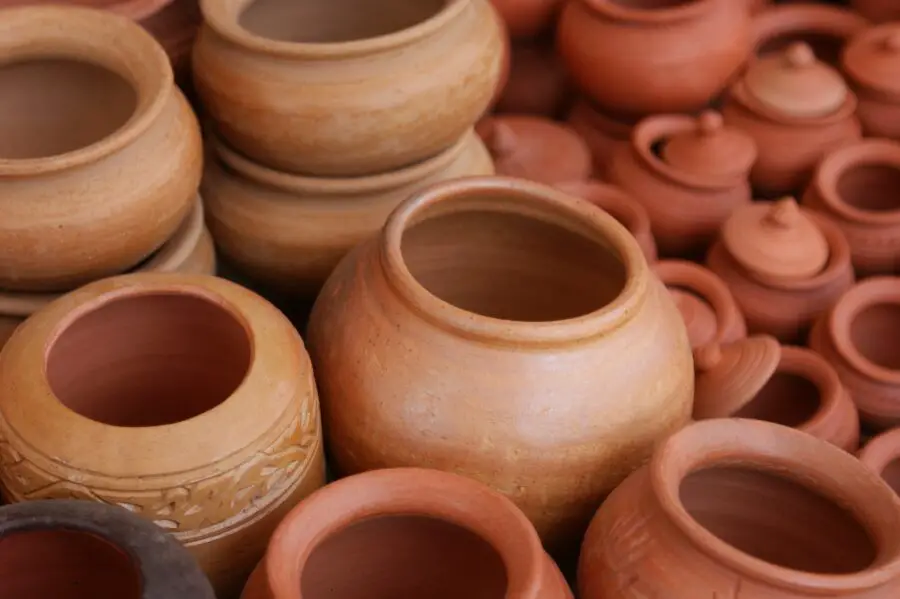
Whether you’re hoping to bring back some handmade souvenirs, want to learn more about the cultural significance of Angkorian pottery, or you’re an avid pottery-enthusiast interested in learning Khmer and Angkorian pottery techniques and design, the Angkor Pottery Center is the place to go.
Offering daily ceramic and pottery classes led by Paruth Hann, the Angkor Pottery Center provides you with the experience of working with Cambodian clay and a traditional potter-wheel.
The Angkor Pottery Center is also a school, workshop, cultural center, art gallery, and souvenir shop all in one; needless to say, this is a great experience whether you’re traveling with friends, solo, or with kids!
And That’s It for the Best Things to Do in Siem Riep!
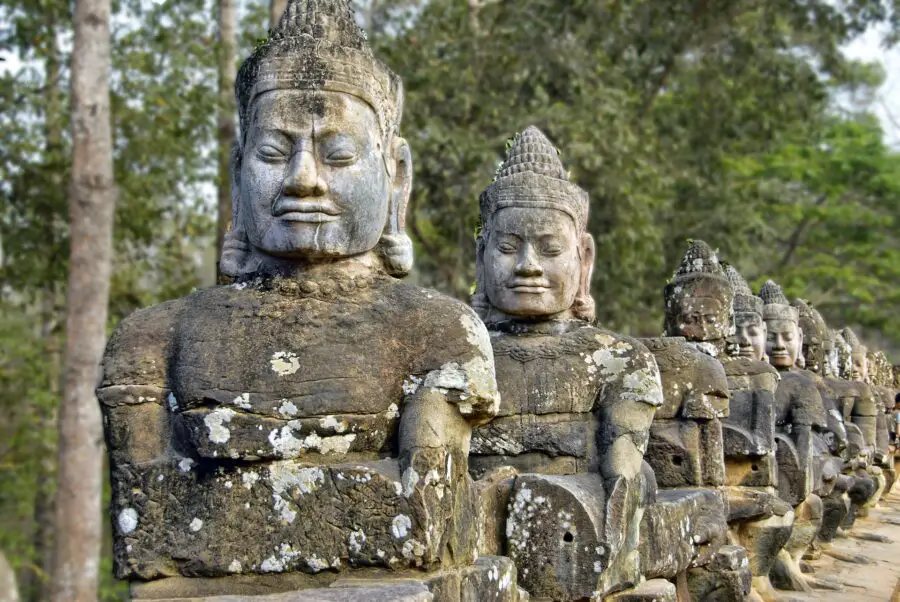
There are endless places to visit in Siem Reap. But alas, vacations don’t last forever! This itinerary of Siem Reap will give you the right mix of all that Siem Reap has to offer (and convince you that a trip back is definitely in order!). If you happen to have some extra time, consider adding the hikes in Phnom Kulen National Park to your itinerary.
Overall, from ancient temples to wild jungles, crazy parties and lively markets, there are always more things to do in Siem Reap. And let’s not forget the dozens of great causes you can support through many of the Siem Reap attractions! So happy responsible traveling, and have a great trip.
Thanks for reading the article! If you have any questions, feel free to comment down below, and if you want to see more travel and hike-related content, make sure to check out my other articles.
Cheers,

Photos by Mia and Pixabay.
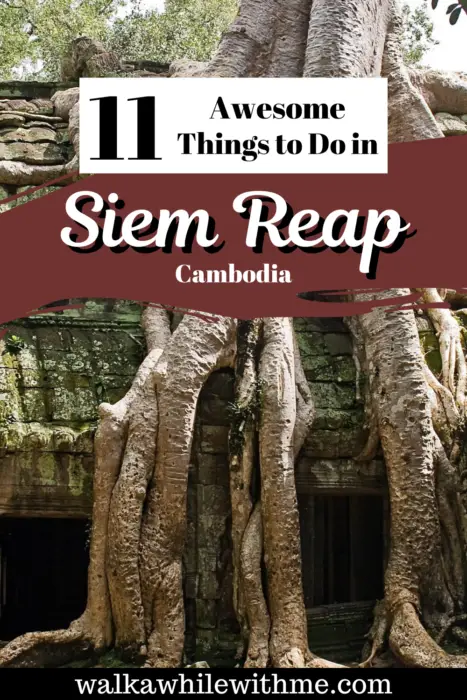

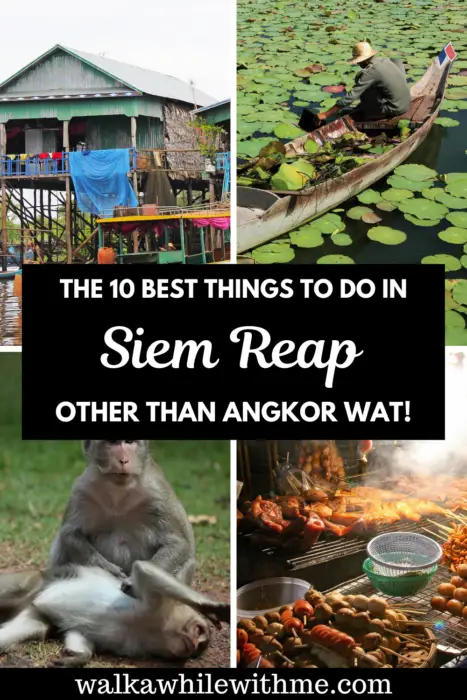
About to embark on a trip around Southeast Asia? Here are some helpful articles to make your trip as awesome and stress-free as possible:
- The Minimalist Southeast Asia Packing List for Women
- My 5-Week Itinerary for Southeast Asia
- How to Travel Without Breaking the Bank
- 15 Things to Do Before a Trip
- How to Start Hiking: 15 Beginner Hiking Tips
- How to Travel as a Student (Even If You’re Broke!)
And here are some additional helpful links:
- Click here for my walking tours
- Click here for my hiking guides
- Click here for more posts on Asia
- Click here for more posts on Cambodia
- Click here for more resources
Like this post? Share it!
